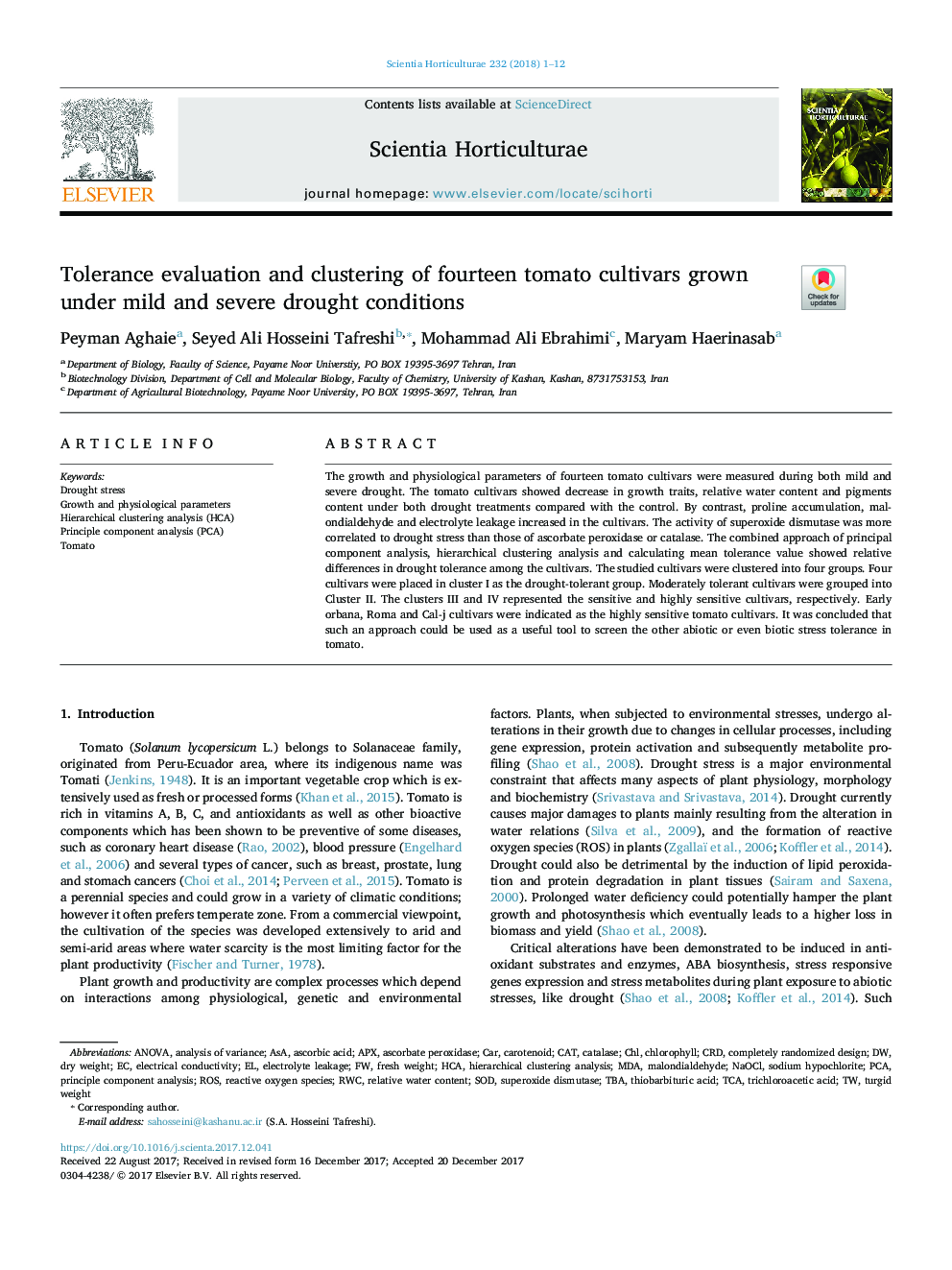| Article ID | Journal | Published Year | Pages | File Type |
|---|---|---|---|---|
| 8892909 | Scientia Horticulturae | 2018 | 12 Pages |
Abstract
The growth and physiological parameters of fourteen tomato cultivars were measured during both mild and severe drought. The tomato cultivars showed decrease in growth traits, relative water content and pigments content under both drought treatments compared with the control. By contrast, proline accumulation, malondialdehyde and electrolyte leakage increased in the cultivars. The activity of superoxide dismutase was more correlated to drought stress than those of ascorbate peroxidase or catalase. The combined approach of principal component analysis, hierarchical clustering analysis and calculating mean tolerance value showed relative differences in drought tolerance among the cultivars. The studied cultivars were clustered into four groups. Four cultivars were placed in cluster I as the drought-tolerant group. Moderately tolerant cultivars were grouped into Cluster II. The clusters III and IV represented the sensitive and highly sensitive cultivars, respectively. Early orbana, Roma and Cal-j cultivars were indicated as the highly sensitive tomato cultivars. It was concluded that such an approach could be used as a useful tool to screen the other abiotic or even biotic stress tolerance in tomato.
Keywords
CRDTCATBAAPXHCACATChlNaOClASAHierarchical clustering analysis (HCA)MDARWCPCAROSAscorbic acidtrichloroacetic acidThiobarbituric acidPrinciple component analysisPrinciple component analysis (PCA)hierarchical clustering analysisanalysis of varianceANOVADrought stressElectrical conductivityChlorophyllSODSodium hypochloriteSuperoxide dismutasecompletely randomized designCARmalondialdehydeRelative water contentelectrolyte leakageturgid weightfresh weightdry weightascorbate peroxidaseCatalaseCarotenoidTomatoReactive oxygen species
Related Topics
Life Sciences
Agricultural and Biological Sciences
Horticulture
Authors
Peyman Aghaie, Seyed Ali Hosseini Tafreshi, Mohammad Ali Ebrahimi, Maryam Haerinasab,
